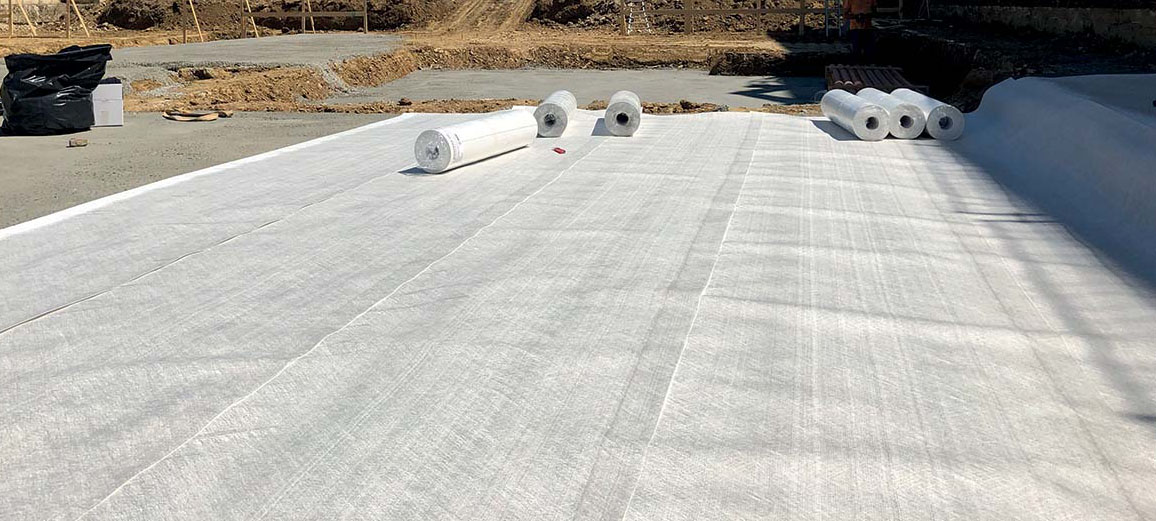A fully bonded system in roofing typically refers to a method of installing single-ply roofing membranes, such as TPO or PVC, where the membrane is adhered directly to the roof substrate using adhesive. In a fully bonded system, the entire underside of the roofing membrane is bonded to the roof deck or insulation boards, creating a continuous and secure attachment.
Here’s how a fully bonded system typically works:
- Surface Preparation: Before installing the roofing membrane, the roof substrate must be cleaned, smooth, dry, and free from dust, debris, and contaminants. Any repairs to the substrate should be completed, and a suitable primer may be applied to enhance adhesion.
- Adhesive Application: A compatible roofing adhesive is applied to the underside of the roofing membrane using a roller, sprayer, or trowel. The adhesive is spread evenly across the substrate or insulation boards, ensuring complete coverage.
- Membrane Installation: Once the adhesive is applied, the roofing membrane is carefully rolled out onto the prepared surface, starting from one end, and working towards the other. The membrane is positioned and pressed into place, ensuring proper alignment and adhesion.
- Rolling and Pressing: After the membrane is laid out, it is rolled or pressed using a weighted roller or broom to ensure intimate contact between the membrane and the adhesive. This step helps to remove air pockets and ensure a tight bond between the membrane and the substrate.
- Seam Welding (if applicable): If the roofing membrane has seams, they are typically heat-welded or chemically bonded to create a watertight seal. This ensures continuity of the waterproofing system and prevents water infiltration through seams.
- Quality Control and Inspection: Once the membrane is fully installed, a thorough inspection is conducted to ensure that it is properly bonded to the substrate, free from wrinkles or bubbles, and securely sealed at seams and penetrations.
A fully bonded roofing system offers several advantages:
- Enhanced Wind Uplift Resistance: The fully bonded membrane provides increased resistance to wind uplift forces, reducing the risk of membrane detachment during severe weather events.
- Improved Thermal Performance: The direct bonding of the membrane to the substrate helps improve thermal efficiency by reducing air infiltration and heat loss.
- Enhanced Waterproofing: The continuous bond between the membrane and substrate minimizes the risk of water infiltration and leaks, providing reliable waterproofing protection.
- Increased Durability: The fully bonded system creates a strong and durable roofing assembly that can withstand environmental stresses and maintain long-term performance.
Overall, a fully bonded roofing system is a reliable and effective method of installing single ply roofing membranes, providing enhanced performance, durability, and waterproofing protection. It’s important to work with experienced roofing professionals to ensure proper installation and adherence to manufacturer’s guidelines for adhesive application.

